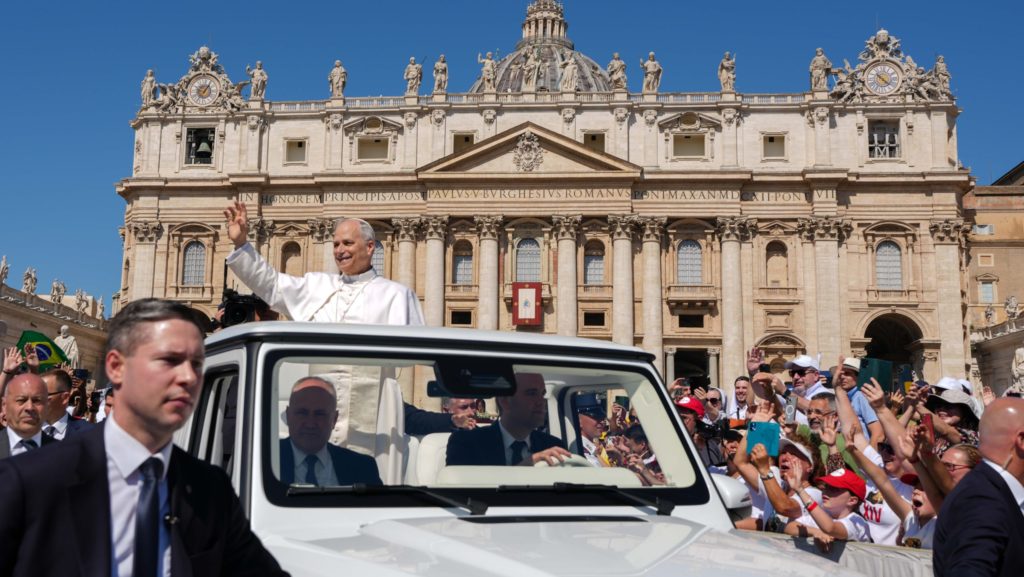With less than a month to go before the Jubilee of Youth begins, the pope’s diocese is making final preparations to welcome tens of thousands of young people from around the world who will participate in this event of great spiritual significance.
“Young people will never experience this in their lives again. I’m sure of it. In practice, it will be like a World Youth Day,” explained Father Alfredo Tedesco, director of youth ministry in Rome, the host diocese.
The Italian priest was 18 when he participated in the Jubilee of 2000 with St. John Paul II: “For our generation, it was an indelible mark. For them, it can be a new beginning.”
The truly great challenge for the Diocese of Rome is accommodations. The parishes of Rome and 10 dioceses in the Lazio region, those closest to the Italian capital, “are already mobilized to welcome young pilgrims into their facilities,” he explained. Furthermore, the religious institutes in Lazio closest to Rome “have also done their part.”
However, adapting these places has been a complex task: “We have had to refurbish these places. We have had to add bathrooms and showers, ensure breakfast service, organize the arrival of groups, distribute pilgrim kits, and coordinate transportation.”
In addition, the Italian Civil Protection Agency has also made 400 schools and state facilities available to meet this need, “especially gymnasiums with equipped restrooms,” Tedesco added.
According to preliminary estimates from the diocese, some 120,000 young people will descend upon Rome for the entire week of the event from July 28 to Aug. 3. Many others will pass through the capital only to participate in some of the planned events.
‘Registration is still open, and the number is growing’
One of the main highlights of the Jubilee of Youth will be the prayer vigil presided over by Pope Leo XIV at Tor Vergata, which will be preceded by several testimonies and musical concerts. This is a very large area located on the southeastern outskirts of Rome, known primarily as the site of the main universities in the Italian capital.
“Registration is still open, and the number is growing. Some even speak of a million people. But we don’t know if that figure will be reached. The Dicastery for Evangelization, the main organizer of the event, has the official data,” the Italian priest explained.
Since the young people will sleep at the same place as the event that night, the logistics for that event have been simplified for the Diocese of Rome: “We don’t have to worry about having to accommodate them elsewhere for that night.”
The Jubilee of Youth program, promoted by the Dicastery for Evangelization — the body responsible for the overall organization of the Holy Year of Hope — is in the last stages of finalizing various details.
However, according to the official jubilee website, several notable activities have already been confirmed. On Tuesday, July 29, at 6 p.m. local time, a welcome Mass will be celebrated in St. Peter’s Square. In the following days, Rome will host numerous cultural, artistic, and spiritual initiatives throughout the capital under the title “Dialogues with the City.”
On Friday, Aug. 1, a Penitential Day will be held at the Circus Maximus, where young people will be able to receive the sacrament of reconciliation.
On Saturday, Aug. 2, all participants will travel to Tor Vergata. Finally, on Sunday, Aug. 3, the pope will celebrate Mass at 9:30 a.m. before bidding farewell to the young pilgrims who will begin their journey back to their home countries.
4,000 young volunteers to assist the pilgrims
With registration still open, the final number of participants is yet to be determined. Nonetheless, what is certain is that they will be joined by approximately 4,000 volunteers from parishes in Rome and the Lazio region, who will donate their time and skills to welcome the pilgrims in the best possible way.
Regarding their countries of origin, Tedesco said there is a notable European majority: “France, Spain, Poland, Germany… and many even from Eastern Europe, despite the war. This will also be a sign of peace.”
There will also be a strong presence from the United States and Latin America. “Let’s not forget that we now have an American pope,” he pointed out. “This has also encouraged participation from the United States, where there is great veneration for the two young saints [Carlos Acutis and Pier Giorgio Frassati] who will be canonized in September,” the priest explained.
Asian participation, although more limited, will be significant. “We will have a significant Korean delegation — 1,000, 2,000, maybe 3,000 young people — which is quite a lot, considering the distance. Furthermore, the next World Youth Day will be in Seoul, so they are very motivated,” he noted.
Regarding Africa, the situation is more delicate: “Some countries haven’t been able to send delegations due to visa or diplomatic issues or armed conflicts. There will be African representation, but not as numerous. The dicastery and the Holy See have made arrangements to facilitate some visas.”

